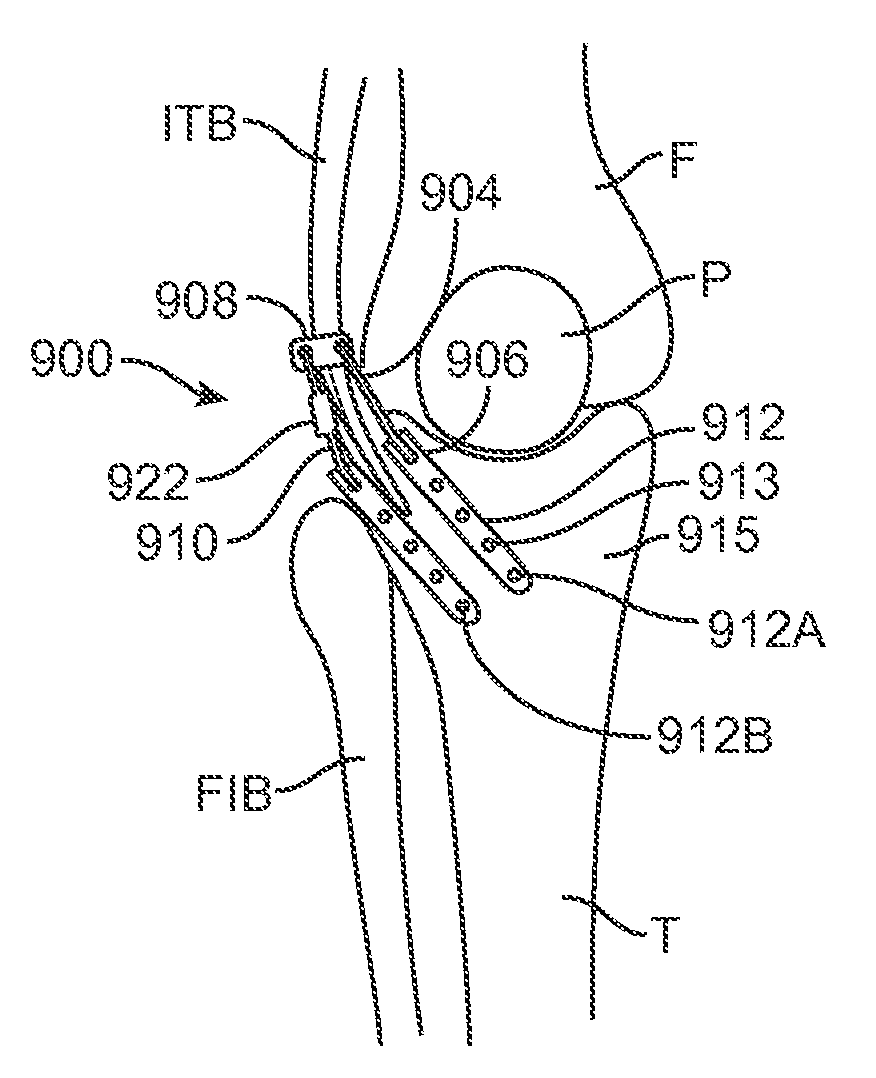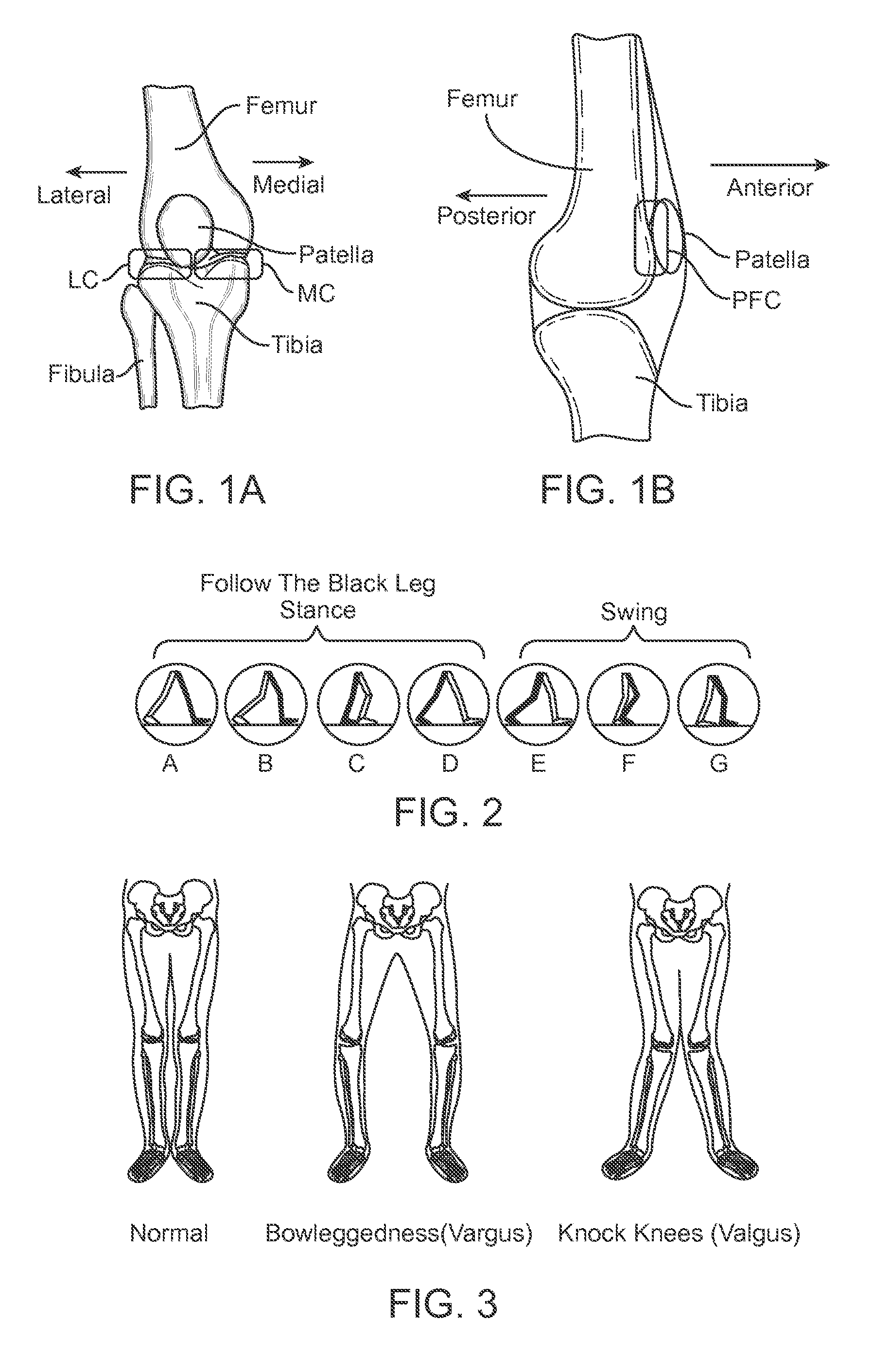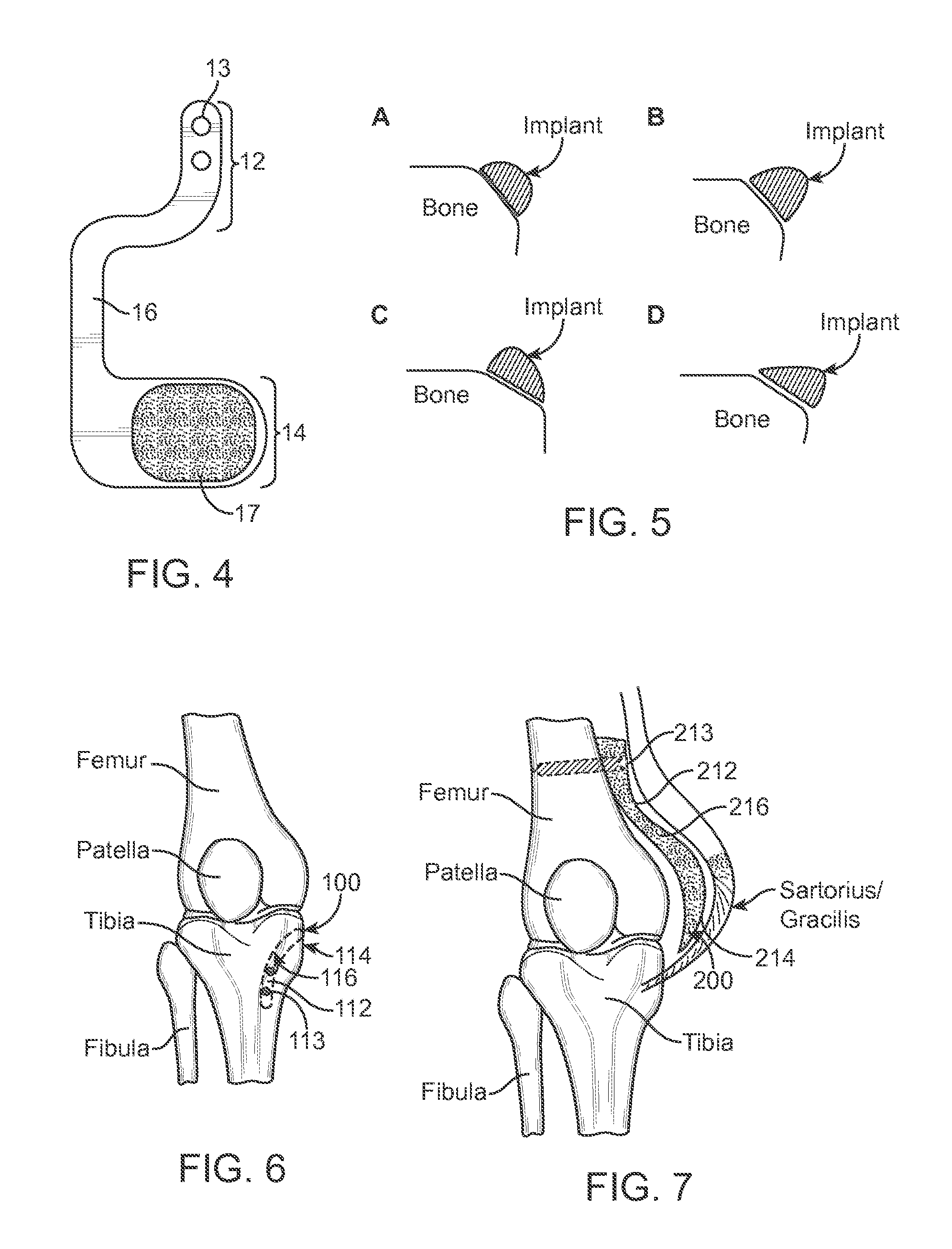Method and Apparatus for Altering Biomechanics of the Articular Joints
a biomechanics and articular joint technology, applied in the field of orthopaedics, can solve the problems of complex joint motion, joint pain and loss of function, bone-on-bone contact, etc., and achieve the effect of redistributing load in the join
- Summary
- Abstract
- Description
- Claims
- Application Information
AI Technical Summary
Benefits of technology
Problems solved by technology
Method used
Image
Examples
example
[0124]An exemplary embodiment of the present invention as shown in FIGS. 18A-D was subjected to simulated load testing. Dimensions of the implant tested were: W1=23 mm, W2=50 mm, LA=35 mm, LB=40 mm, D=30 mm. The test was conducted as follows: Using a robotic testing system for evaluating knee joint biomechanics, as described by Gadikota et al., American Journal of Sports Medicine, 38, 713-720, 2010, simulations were run using cadaveric human knee specimens. Eight fresh-frozen cadaveric human knee specimens (4 male, 4 female, Age: 36-50 y) stored at −20° C. were thawed at room temperature prior to testing. The quadriceps muscles were loaded at 300N, the hamstrings at 100N, and the iliotibial band at 0, 50, and 100N to simulate a variety of loading conditions. The displacement of the IT Band ranged from 15 to 20 mm. The robotic testing system was used to determine knee joint kinematics and contact forces in the medial and lateral compartments from 0° to 30° flexion, with and without t...
PUM
 Login to View More
Login to View More Abstract
Description
Claims
Application Information
 Login to View More
Login to View More - R&D
- Intellectual Property
- Life Sciences
- Materials
- Tech Scout
- Unparalleled Data Quality
- Higher Quality Content
- 60% Fewer Hallucinations
Browse by: Latest US Patents, China's latest patents, Technical Efficacy Thesaurus, Application Domain, Technology Topic, Popular Technical Reports.
© 2025 PatSnap. All rights reserved.Legal|Privacy policy|Modern Slavery Act Transparency Statement|Sitemap|About US| Contact US: help@patsnap.com



